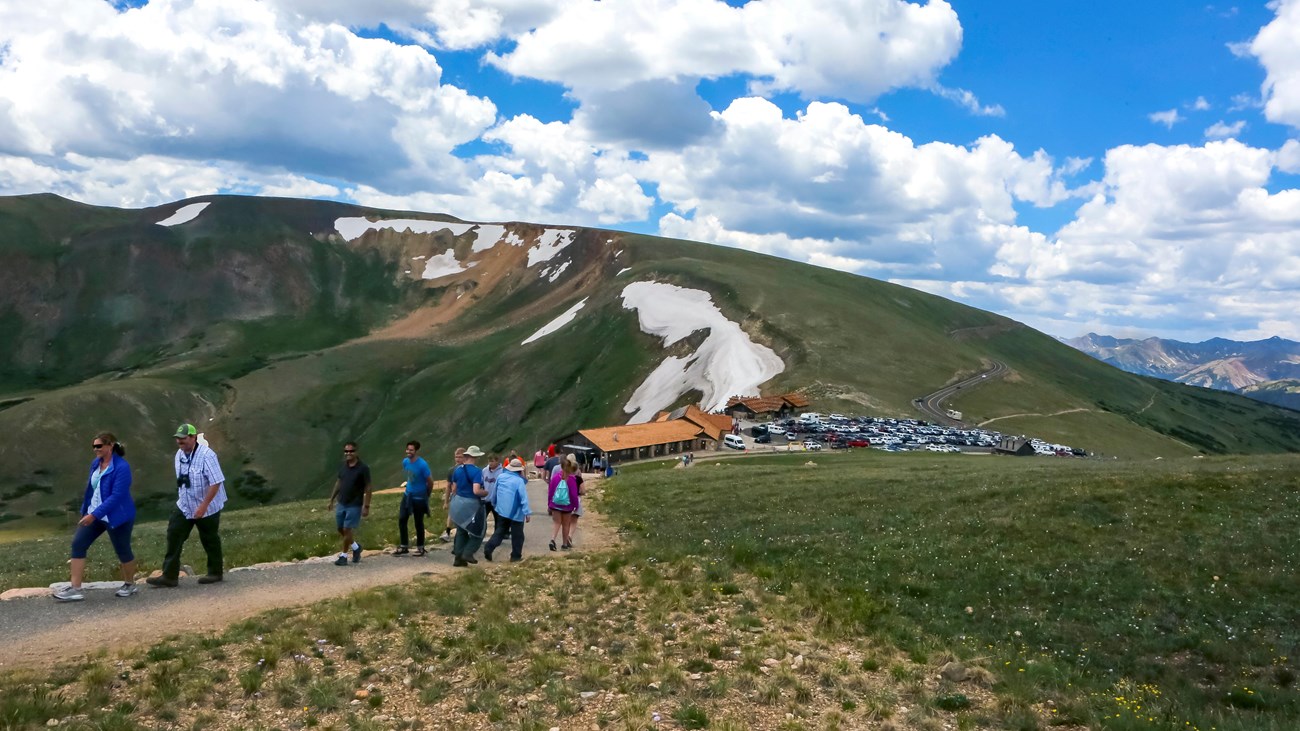Last updated: June 6, 2025
Thing to Do
Hike the Alpine Ridge Trail

NPS/Schonlau
- Distance: 0.6 mile round trip (1 m)
- Elevation Gain: 162 feet (49 m)
- Trail Type: Out and Back trail with a steep incline. The trail begins at an elevation of 11,796 feet above sea level
Starting from the Alpine Visitor Center parking lot, this is a short hike with incredible views. Take your time and pace yourself. Elevation makes this hike challenging.
There are interpretive signs along the way to stop and read and catch your breath. Enjoy the alpine wildflowers and views of the alpine tundra. Alpine avens, moss campions, and alpine forget me nots can be found here. At the top and end of the hill you will get beautiful vistas of the Never Summer Mountains, and may even see the plains of Wyoming on a clear day.
Tread Lightly: Stay on the paved asphalt trail and do not pick flowers. Do not walk off trail onto the Tundra! Repeated footsteps often destroy tundra plants, allowing exposed soil to blow away. Recovery may take hundreds of years, so please use designated trails when exploring this unique area.
Note: Pets are prohibited on ALL park trails, tundra, and meadow areas. Leashed pets are only allowed in picnic areas, parking lots, campgrounds, and along roadsides
Altitude Warning: Altitude sickness affects many visitors every year. Symptoms include headache, nausea, fatigue, dizziness, vomiting, and even unconsciousness. Altitude can also aggravate pre-existing conditions like heart and lung disease. Take your time, drink water, eat, and rest. The only cure for altitude sickness is to go down to a lower altitude.
Weather Warning: Weather in the mountains can turn in an instant! Be prepared for changing weather conditions. Check the forecast before heading out. Lightning can strike anywhere in Rocky. Watch for building storm clouds and return to the trailhead immediately if you hear thunder. As a rule of thumb, try to be back at the trailhead by noon.
Visit the RMNP Timed Entry page on Recreation.gov for details and to make a reservation.
Altitude sickness caused by being at high elevations affects many visitors every year. Symptoms include headache, nausea, fatigue, dizziness, vomiting, and even unconsciousness. High altitude can also aggravate pre-existing conditions like heart and lung disease.
Take your time, drink water, eat, and rest. If you are not feeling well or feeling the effects of altitude sickness, know that the only cure for altitude sickness is to go down to a lower altitude.
